Carbon offsets are fast becoming an effective way for businesses to quantify Environmental, Social and Governance (ESG) investments.
The United Nations’ Paris Agreement is a key driver of public awareness, but it is corporates who are leading the charge. A fifth of the world’s 2000 largest companies (the likes of apple, Microsoft, Nike, and Amazon) have already committed to net zero targets, and they’re doing so independent of government legislation.
Businesses are committing to carbon offsets because they’re a proven way to mitigate climate change while making tangible, positive impact. And the way environmental markets are set up means they can put a value on their actions as well as verifying their ESG credentials.
What are Carbon Offsets?
Many companies do adopt practices to cut their emissions at the source, but not every entity can viably cease outputting carbon entirely.
Enter: carbon credits.
Carbon Offsets are carbon credits purchased by corporates to counteract emissions they have not yet been able to eradicate. Carbon Credits in Australia are a capped market that operate like stocks, except an Australian Carbon Credit Unit (ACCU) represents one tonne of carbon or greenhouse gas equivalent removed from the atmosphere.
How do businesses use Carbon Offsets?
Larger emitters use carbon offsets as a means to satisfy their environmental requirements, through the Clean Energy Regulator (CER)’s safeguard mechanism. But purchasing ACCUs is often done voluntarily, and doesn’t only account for emissions reduction, but is a way for businesses to meet ESG targets and in some cases, produce income.
The federal government’s ‘Safeguard Mechanism’ calls for large polluters to purchase and surrender ACCUs to comply with regulation, but most corporate participation in the carbon market is voluntary. The Harvard Business Review interviewed 70 senior executives over 43 of the world’s biggest investment companies and found that ESG was almost always paramount. This is because shareholders note the difference. Many studies have proven the link between companies with high ESG values and high share market performance, with one study by Nordea Equity Research showing that those with the highest ratings trump the financial performance of the lowest by up to 40%.
Because of this, carbon offsets are taking up more and more space in ESG sections of EOY reports as part of sustainability strategies that look to have an immediate impact while they work on reduction of emissions — but it’s not only social capital that companies stand to reap.
Carbon Offset Investment
Because the carbon market is capped, supply and demand dictates ACCU value, and credits become worth more as more are snapped up.
The AFR reports that current research predicts >ACCU values to double by 2030. And with the CER, the Australian Government’s peak body in control of carbon credits, opening the carbon market up to individuals, public buy-in is likely to drive values even higher.
The market is at the stage where corporates, not government, are leading the charge. With changes to US government leadership leaning green, and the Paris Agreement seeing more buy-in, countries like Australia are slated to commit to more substantial climate change mitigation commitments that will encourage further environmental market participation.
Carbon Offset and Carbon Credit Quality
All carbon credits equal the same amount of emissions, but not all carbon credits are equal. The quality of a carbon credit is intrinsic to the pedigree of the carbon project or the registered issuer. This is compounded by more entities entering the market as its potential is publicised.
So how do you make sure the credits you are purchasing are high quality, and the ESG benefits are real? You go to the market leaders. GreenCollar is Australia’s largest project developer and investor with a portfolio of over 200 nature-based projects to our name. We’re also the most successful and longest standing. Our work in environmental markets dates back to 2008, and we are still the largest provider of high-integrity ACCUs to the Australian Government.
Buying Carbon Credits in Australia
ACCUs must be purchased from an abatement project registered through the Emissions Reduction Fund, which has a project map of available sources.
The Carbon Market Institute (CMI), working in collaboration with the CER, also has a list of registered projects categorised by project type, and a marketplace to inform prospective buyers.
As a pioneer of Australia’s carbon market, we work closely with the CMI and CER to effect positive environmental impact and are leading the country in putting ecology on the economic agenda. Our domestic and global team are best placed to advise on how to select high quality and high integrity Australian and international carbon credits across various project types and jurisdictions at competitive prices.
For business owners and corporations, this means we’re best equipped to help you take the path less trodden while keeping your footprint light.








